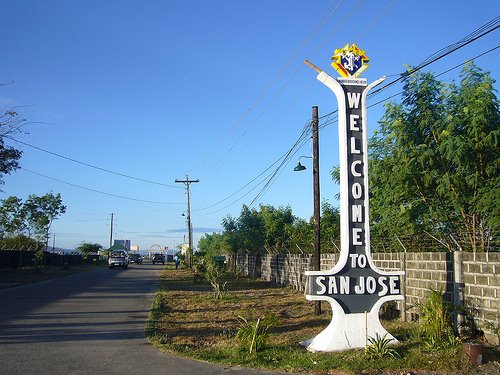Bihira na tiyak sa mga Generation Xers ang nakakikilala sa sikat na aktor noon na si Vic Vargas.
Bago iyan, isa sa mga paborito ko noon sa serialized comics sa Liwayway ay ang nobela ni Francisco V. Coching at sa dibuho ni Federico C. Javinal na isinapelikula noong 1972 kung kailan ay Grade III pa lang yata ako. Ito ay ang pelikulang “El Vibora”. Ngayong uso na ang internet, at bilang isa ang pelikulang ito sa bahagi ng aking kamusmusan, diniskubre at inunawa sa pamamagitan ng makabagong lente ng teknolohiya at lulan ng duyan ang pagbabalik-tanaw sa mga bagay na kaugnay ng aking happy childhood.
Bago iyan, isa sa mga paborito ko noon sa serialized comics sa Liwayway ay ang nobela ni Francisco V. Coching at sa dibuho ni Federico C. Javinal na isinapelikula noong 1972 kung kailan ay Grade III pa lang yata ako. Ito ay ang pelikulang “El Vibora”. Ngayong uso na ang internet, at bilang isa ang pelikulang ito sa bahagi ng aking kamusmusan, diniskubre at inunawa sa pamamagitan ng makabagong lente ng teknolohiya at lulan ng duyan ang pagbabalik-tanaw sa mga bagay na kaugnay ng aking happy childhood.
Ang
kuwento ng “El Vibora”, sa Liwayway man o sa telon ng El Mundo Theater ay pwede
umanong ituring na halaw sa kuwento ng bayaning si Heneral Artemio Ricarte.
Isang kilalang manunulat sa katauhan ni F. Sionil Jose sa aking pagkakatanda ay
sumulat rin ang aklat na may pamagat na “Vibora!” noong 2007. Ang nobela ay
naglalahad ng buhay ng isang Benjamin Singkol na nag-kuwento ng nalalaman niya
sa buhay ni Ricarte. Si Ricarte nga pala, ang tunay na buhay na Vibora, ay marubdob
na kontra Amerikano. Nakita niya kung papaano minasaker ng mga Kano ag mga
Pilipino habang ang mga elitista niyang kababayan ay dinidiyos ang mga ito
noon. Hindi niya masikmura ang pagbubulag-bulagan ng kanyang mga kalahi noon sa
panunupil ng mga Kano. Naniniwala ang Vibora sa tunay na buhay na ang mga Kano
ay ang siyang tunay na kaaway ng mga Pilipino kaya siya ay itunuring na taksil
ng mga kapwa niya lider rebolusyunaryo noon.
Ang
bida sa pelikulang aksyon na “El Vibora” ni Ishmael Bernal ay isinilang dito sa
Kanlurang Mindoro kung hindi ninyo alam. Siya ang isa sa iilang versatile actors ng bansa at halos lahat
na yata ng genre sa pelikula ay nagampanan na niya. Pero bago
pa man ang “El Vibora” nauna siyang nadiskubre ni Doc Jose Perez na siyang may-ari
ng Sampaguita Pictures habang nagtuturo ng Judo at Karate sa isang program sa
TV. Una siyang nakilala nang magbida sa pelikulang “Diegong Tabak” noong 1963
hanggang sa mapansin siya sa mga pelikulang aksyon at drama at itinuring na macho man noon ng puting tabing. Sa kabila nito, mahusay
niyang nagampanan, sa isang pelikulang katatawanan, ang papel ni “Andres de
Saya” na isa ring karakter sa komiks na likha ni Carlo J. Caparas.
Kahit siya ay sikat na, may pagkakataong dumadalaw ito sa kanyang bayang sinilangan, nakikipag-laro ng basketbol sa kanyang mga pinsan ay kabarkada at namamasyal sakay ng kanyang scooter lalo na kapag piyesta sa kanilang lugar. Higit sa 60 pelikula ang nagawa niya simula 1950s hanggang 2002. Sa pelikulang “El Vibora” nga pala ay natamo niya ang “Best Actor Award” sa 7th Manila Film Festival noon ngang 1972. Bago ito, gumanap din siya sa mga tinatawag na Bomba (or soft core sex) Films sa mga pelikulang pinagtambalan nila ni Rosanna Ortiz sa “Saging ni Pacing” ni Luis San Juan at “Bukid ay Basa” ni Ading Fernando at iba pa.
Kahit siya ay sikat na, may pagkakataong dumadalaw ito sa kanyang bayang sinilangan, nakikipag-laro ng basketbol sa kanyang mga pinsan ay kabarkada at namamasyal sakay ng kanyang scooter lalo na kapag piyesta sa kanilang lugar. Higit sa 60 pelikula ang nagawa niya simula 1950s hanggang 2002. Sa pelikulang “El Vibora” nga pala ay natamo niya ang “Best Actor Award” sa 7th Manila Film Festival noon ngang 1972. Bago ito, gumanap din siya sa mga tinatawag na Bomba (or soft core sex) Films sa mga pelikulang pinagtambalan nila ni Rosanna Ortiz sa “Saging ni Pacing” ni Luis San Juan at “Bukid ay Basa” ni Ading Fernando at iba pa.
Ngunit
nang tumamlay na ang kanyang karera, nasangkot din siya sa iba’t-ibang kaso na
may kinalaman sa droga. Noong Disyembre 7, 1993, naaresto siya ng Malabon
anti-narcotics unit dahil umano sa pagtutulak ng shabu sabi sa balitang ITO. Simula
noong 1995 hanggang 2000 siya ay nanirahan na sa Taytay, Palawan. Sumapi siya sa Bantay Dagat sa layuning ingatan ang kalikasan doon at napabilang sa Charismatic Movement. Pero siya ay nakulong
sa kasong estafa sa Pampanga noong Enero 2003 ayon sa ulat na mababasa DITO. Siya ay agad namang nakalaya hanggang sa ma-stroke
at bawian ng buhay noong Hulyo 19, 2003 sa Pasay.
Si Vic Vargas ay si Jose Maria Marfori Asuncion sa totoong buhay na pamangkin
ni Maximino Papa na naging alkalde ng Sablayan simula noong 1925 hanggang 1927.
Noong 1929 siya ay naging alkalde rin ng San Jose at bumalik ng Sablayan at
muling nahalal noong1938 hanggang 1940. Si Papa, na kilala sa taguring Minoy kasama ang ama ng artistang aking ibinibida sa inyo ngayon ay pinatay ng mga gerilya dahil lamang sa bintang na sila ay maka-Hapon.
Si
Vic Vargas ay ipinanganak dito sa Sitio Busaran, Brgy. Poblacion, Sablayan noong
ika-28 ng Marso 1939, eksaktong 74 na taon na bukas….
-------
(Photo: Philstar.com. Vic Vargas with Maggie dela Riva in the stills of "Ang Langit ay Para sa Lahat")











